A Guide to Flowers at Peiyang Park Campus
There is no more gratifying activity than a trip to admire the beauty of flowers on Peiyang Park Campus, Tianjin University. Here are a selection of some common flowers found on the Peiyang Park Campus and the spots where we can find them.
Crabapple
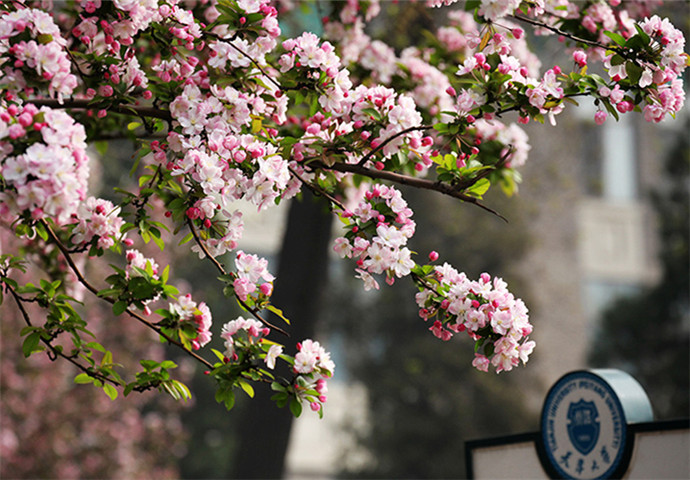
The Crabapple tree has green foliage and inconspicuous white to pinkish-white flowers. Its greatest bloom is usually observed in mid spring, with fruit and seed production starting in the summer and continuing until fall. The crabapple flower has been favored by the Chinese throughout history, and praised by them as a “national beauty”, “flower fairy” and “flower concubine”.
Location: Qi Yuan; the west gate of the stadium
Purple Leaf Plum
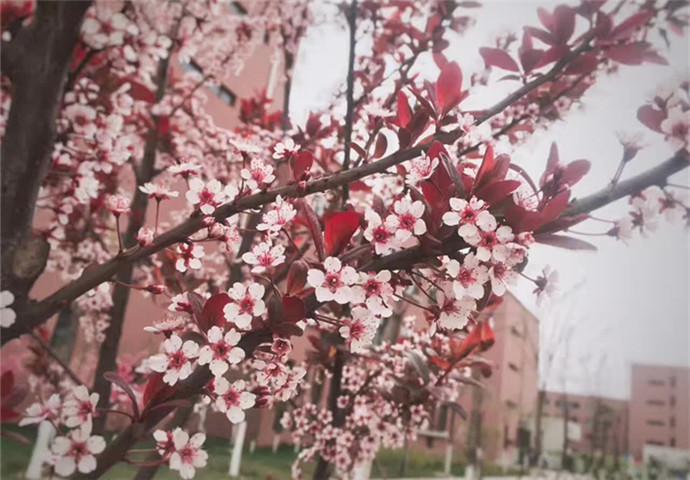
A native of Asia, the purple leaf plum tree grows in most types of garden soil as long as it is well-drained. The purple Leaf Plum is a cultivar of Prunus cerasifera, a small, deciduous tree that grows from 15 to 28 feet tall. Purple-leaved cultivars display rounded, spreading or columnar crowns with oval leaves following white to pinkish-white flowers in spring. The purple leaves persist throughout the summer.
Location: the riverside
Peach blossom
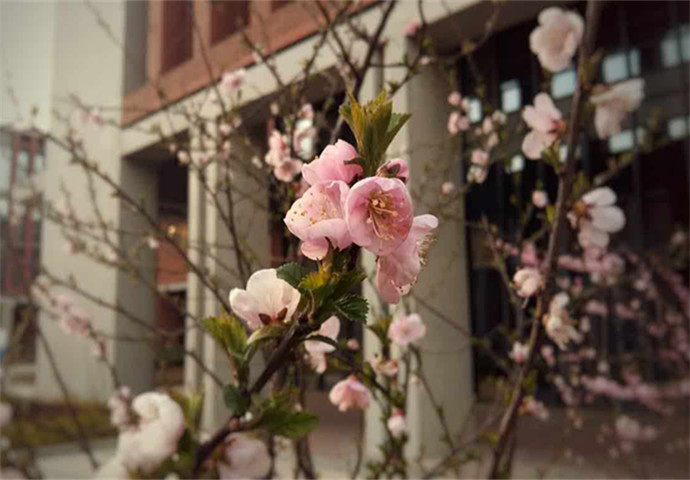
The peach tree presents its greatest bloom lasting for half a month in mid spring. It is heliophilous, drought and cold tolerant. The plant can survive exposure to temperatures below -25°C in winter.
Location: the east gate of Building 43; the riverside in front of Zhi Yuan
Red-leaf Peach blossom
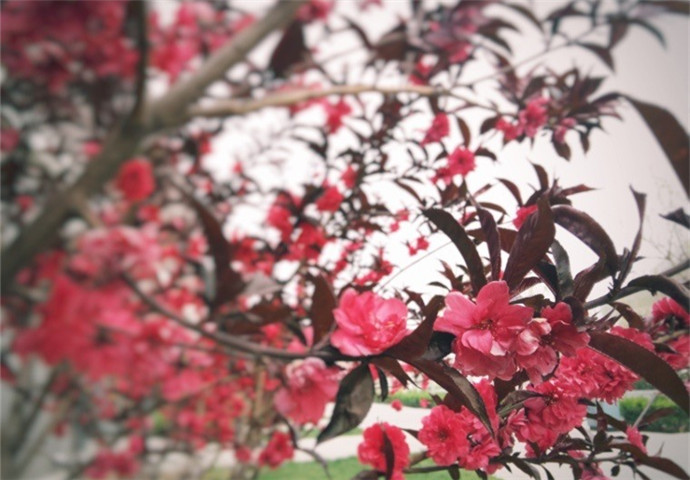
The red-leaf peach is a mutation of the fruit tree and belongs to color-leafed plants. It is also drought and cold tolerant. This kind of peach tree blooms between April and May.
Location: the east side of the Building 37
Forsythia Suspensa
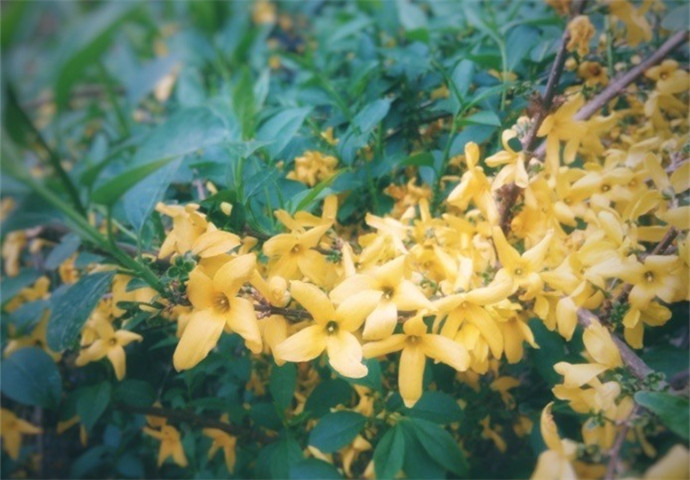
Forsythia suspensa is a large shrub. It can be grown as a weeping shrub on stream banks and can be identified by its pale flowers. Garden cultivars can be found. It is a spring flowering shrub, with yellow flowers blooming between March and April. It is grown and prized for its toughness.
Location: Qi Yuan
Lilacs
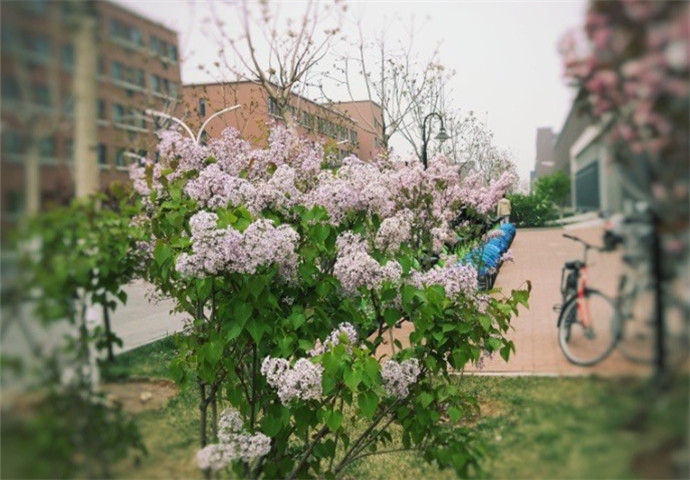
The ideal lilac shrub has about 10 canes and produces flowers at eye-level—all the better to enjoy that sweet, haunting fragrance. Lilacs bloom in the northern provinces for 2 weeks in late May. However, there are early-, mid-, and late-season lilacs, which, when grown together, ensure a steady bloom for at least 6 weeks. Lilacs are hardy, easy to grow, and low maintenance. The fragrant flowers are good for cutting and attractive to butterflies.
Location: the west side of the Building 37
Magnolia Denudate / Magnolia Liliiflora
Magnolia denudata, known as the lilytree or Yulan magnolia, is native to central and eastern China. It has been cultivated in China since 600 AD. Its flowers were regarded as a symbol of purity in the Tang Dynasty and it was planted in the grounds of the Emperor's palace. It likes rich, moist soil and should be planted in a location where it is protected from elemental extremes. It blooms in early spring.
Location: the Riverside
Willow tree
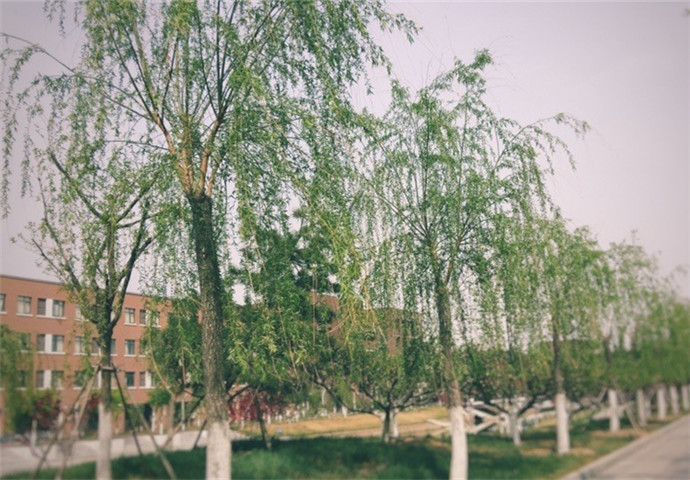
Willows are found primarily on moist soils in cold and temperate regions of the Northern Hemisphere. Willows all have abundant watery bark sap, which is heavily charged with salicylic acid, soft, usually pliant, tough wood, slender branches, and large, fibrous roots. The roots are remarkable for their toughness, size, and tenacity, and roots readily sprout from aerial parts of the plant.
Location: the Riverside
By: Cai Wenting
Editors: Qin Mian and Christopher Peter Clarke

